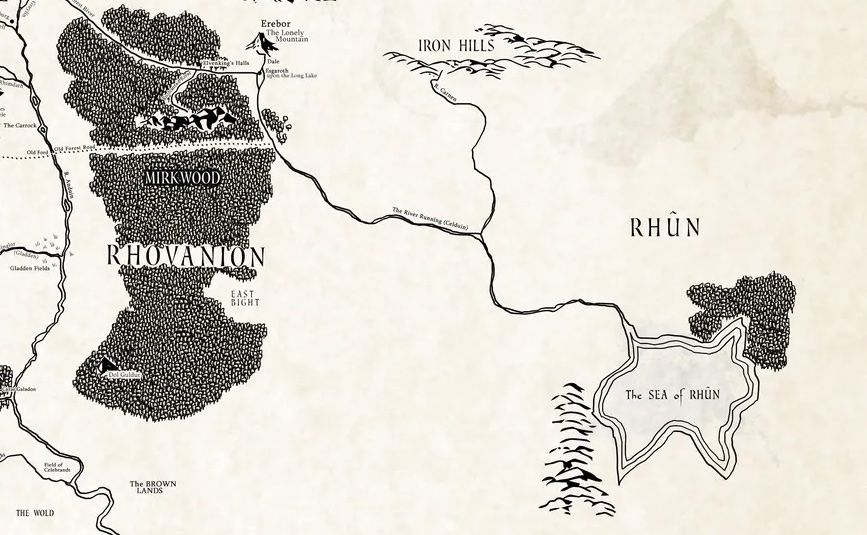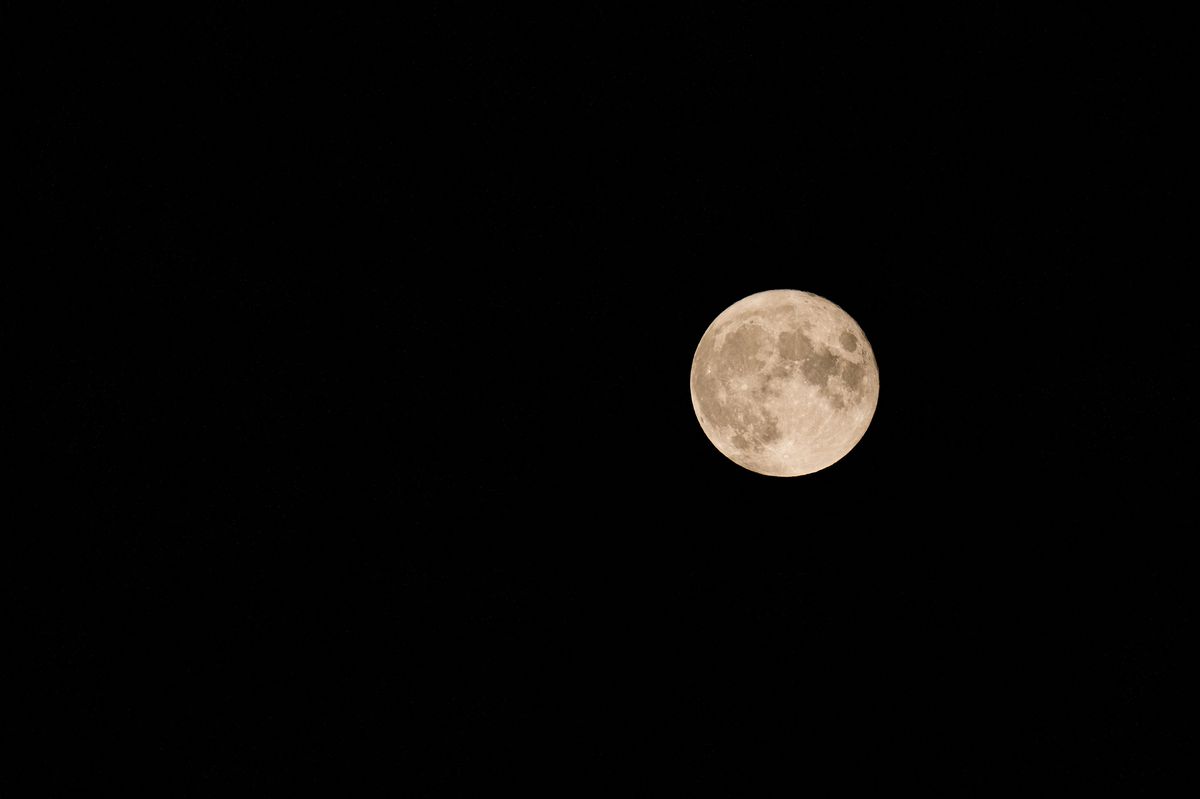This summer, as the first glimpses of The Lord of the Rings: The Rings of Power came to light, there was one character in particular who grabbed fan attention and held it fast: a white-robed figure, with closely shorn hair and paper-white skin. In the absence of any other indications, the creepy appearance and overtly menacing stare led fans to a single hunch: This was the show’s version of Sauron!
Well, with the fifth episode of The Rings of Power, that mysterious white-robed character has finally made an appearance, and left only more questions in their wake. Tolkien’s source material provides hints at where the story may be going, and what relation the characters do have to Sauron, The Stranger, and the show’s other mysteries.
[Ed. note: This piece contains spoilers for episode 5 of The Rings of Power, “Partings.”]
What we know about the white-robed Dweller
Image: Prime Video
Our mysterious Sauron-potential makes her debut early in the episode, as one of a trio of figures who seem to be seeking the equally mysterious meteor man known as the Stranger. The episode’s credits refer to her as “the Dweller,” and she’s played by Bridie Sisson; with her companions the Nomad (played by Edith Poor in the helmet with flowing red hair) and the Ascetic (played by Kali Kopae, hooded and carrying a round… thing).
They are pale of skin and pale of robes, and carry a selection of odd accoutrements. The Dweller has an ornate staff, while the Ascetic brandishes a metal disk or dish emblazoned with circles and a crescent. The Nomad’s armor contains several motifs of eyes and circles — and fingers, interlaced over the top of her helm.
We know more key detail beyond what’s on screen in episode 5: Speaking to Time magazine, Rings of Power executive producer Lindsey Weber said that these characters have traveled here from “from far to the east — from the lands of Rhûn.”
What is Rhûn?

Image: LOTR Project
In the most broad sense, Rhûn means everything east of the map in The Lord of the Rings, all the land in that direction that didn’t factor into the story Tolkien wanted to tell. And since it wasn’t important to the story he wanted to tell, it has largely remained undescribed.
Although the races of dwarves, men, and elves originated somewhere in Rhûn and migrated west, that was so fantastically long ago — and the world has gone through multiple geographic upheavals since — as to give us no sense of its current state. It’s a blank canvas for Rings of Power to explore, perhaps even a chance to flesh out the blanket term of “Easterlings” that Tolkien’s modern elves, humans, and dwarves had to refer to men from the east.
So, where do these white-robed figures come from? In a very literal way, “Parts Unknown.”
What does this mean for the Stranger?
Rhûn has one pretty solid attribute that may come to bear here: It’s also where the Blue Wizards supposedly skittered off to. And “one of the Blue Wizards” is a not-unlikely theory for the true identity of the Stranger.
The duo of azure-attired colleagues of Gandalf and Saruman is one of the long list of concepts that Tolkien wrote into The Lord of the Rings with little elaboration, and then spent the rest of his days deciding whether to elaborate on them in The Silmarillion. Like Rhûn itself, the two passed geographically out of the scope of Tolkien’s favorite stories, and so out of the necessity of exploring them.
He toyed with different names and different origins for them: Perhaps they were Alatar and Pallando, two wizards who eventually became real slackers and forsook their mission to chill in Rhûn. Or, maybe, they were Morinehtar and Rómestámo, two wizards who struggled long to dilute what they could of Sauron’s influence in the east of Middle-earth, without whose work the Dark Lord surely would have overrun Gondor and the rest of Eregion.
In the end, we know very little about what Tolkien would have intended for the Blue Wizards had he finished his opus, except that they traveled much farther east than the others and stayed there. It’s possible that this connection to Rhûn will eventually turn into a connection to the Blue Wizards.
But wait, there’s one more thing.
It’s the moon

The other potential hint about the Stranger this episode is in his celestial origin, his seeming focus on the stars, a telling shot of him gazing up at the moon, and the very moon-reminiscent emblem on the Ascetic’s disk.
The Stranger could be the Man in the Moon.
This might sound like a joke, but in Tolkien’s Middle-earth, the sun and moon had their own very specific origin story. You may have heard about how Galadriel’s war against Morgoth began when he destroyed a couple of glowing trees. Well, at the time, those trees (and the stars in the sky) were the only sources of natural light in the world. The sun and moon were created to replace them, glowing ships that were piloted through the sky and under the earth by a couple of Maiar, beings of the same order as Sauron and Gandalf.
The moon’s vessel was piloted by the Maiar Tilion, who was known for his unreliability — his unrequited crush on the Maiar piloting the sun is the reason for why the moon often appears in the sky with the sun. And the legend of the guy who pilots the moon even reached “modern” hobbits, who have stories and songs (one a parody of “Hey Diddle Diddle”) about the silly things that ensued during the bumbling Man in the Moon’s visits to Middle-earth.
Metatextually, Middle-earth’s moon is a combination of Tolkien’s lore of the elves, and the stories he told to entertain his children — just like Tom Bombadil and hobbits themselves. The Man in the Moon appeared both in Roverandom, a story the professor invented to comfort his son after he lost a favorite toy at the beach; and in the annual letters he wrote and illustrated for his children in the voice of Father Christmas.
But whether the Stranger is the Man in the Moon or a Blue Wizard, it seems these milky-white-clad strangers from Rhûn know something about him. We’ll have to wait and see when The Lord of the Rings: The Rings of Power decides to resolve this particular mystery.

